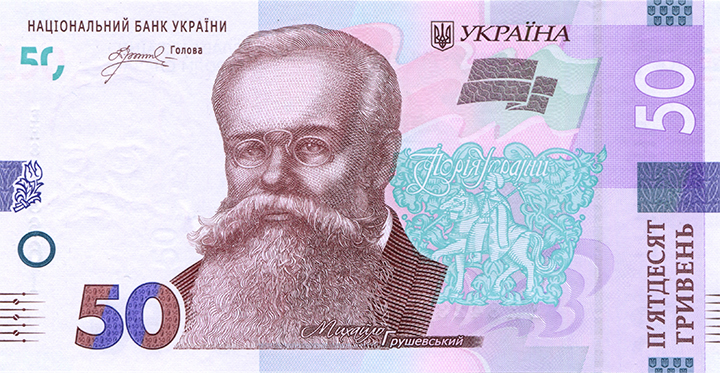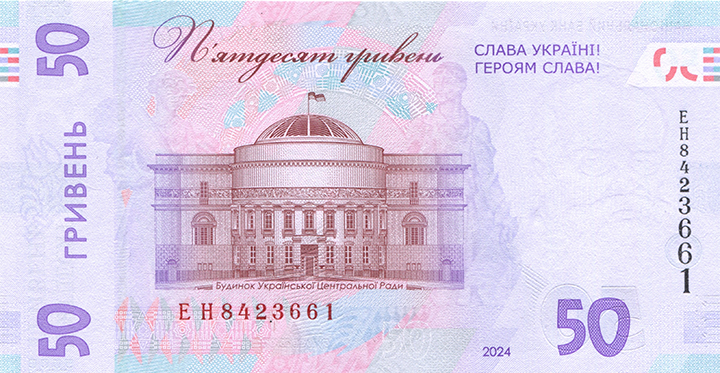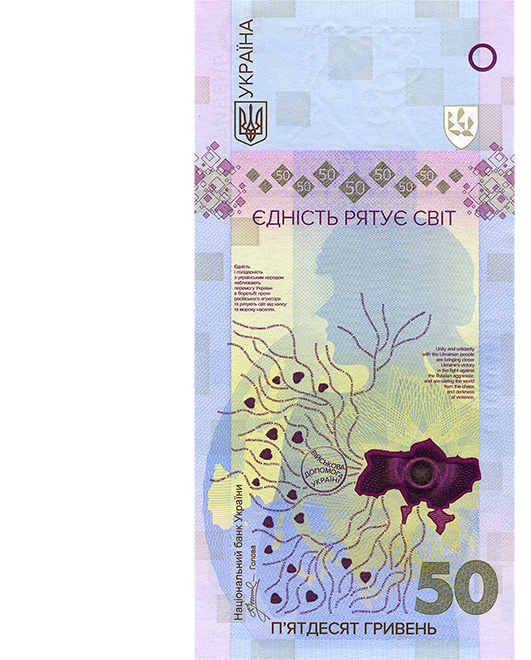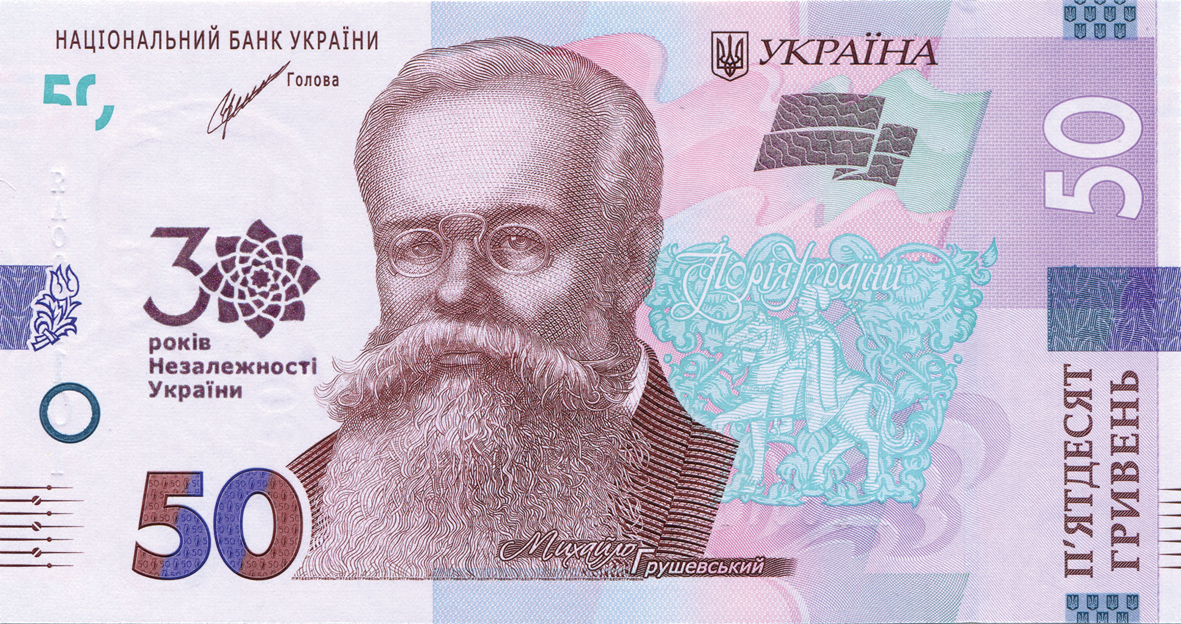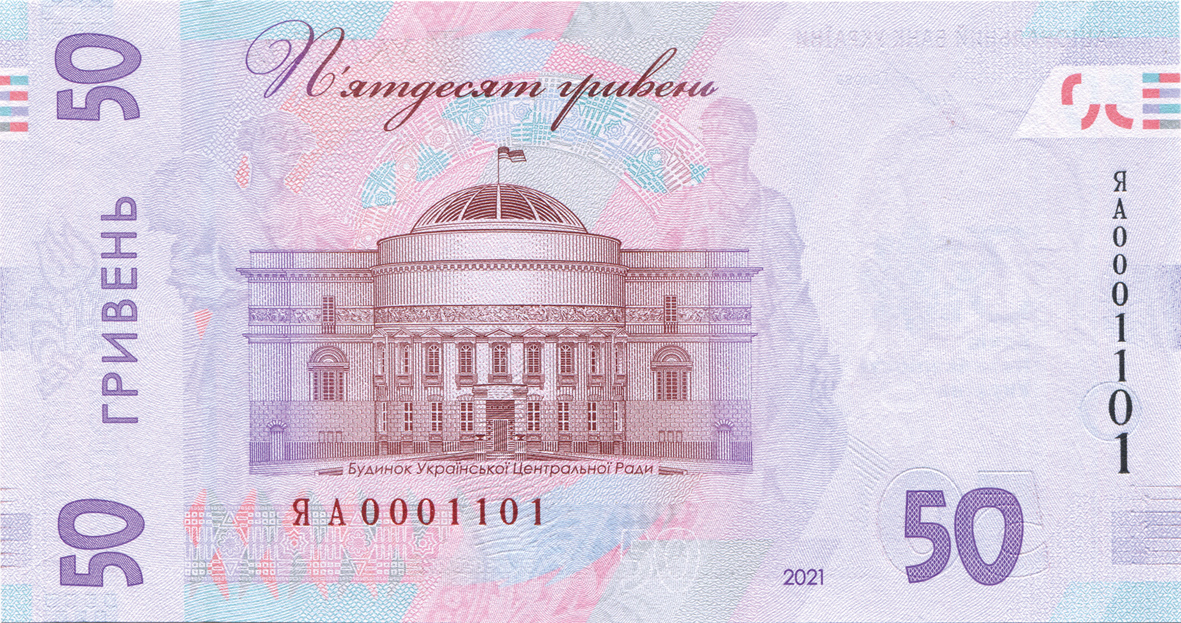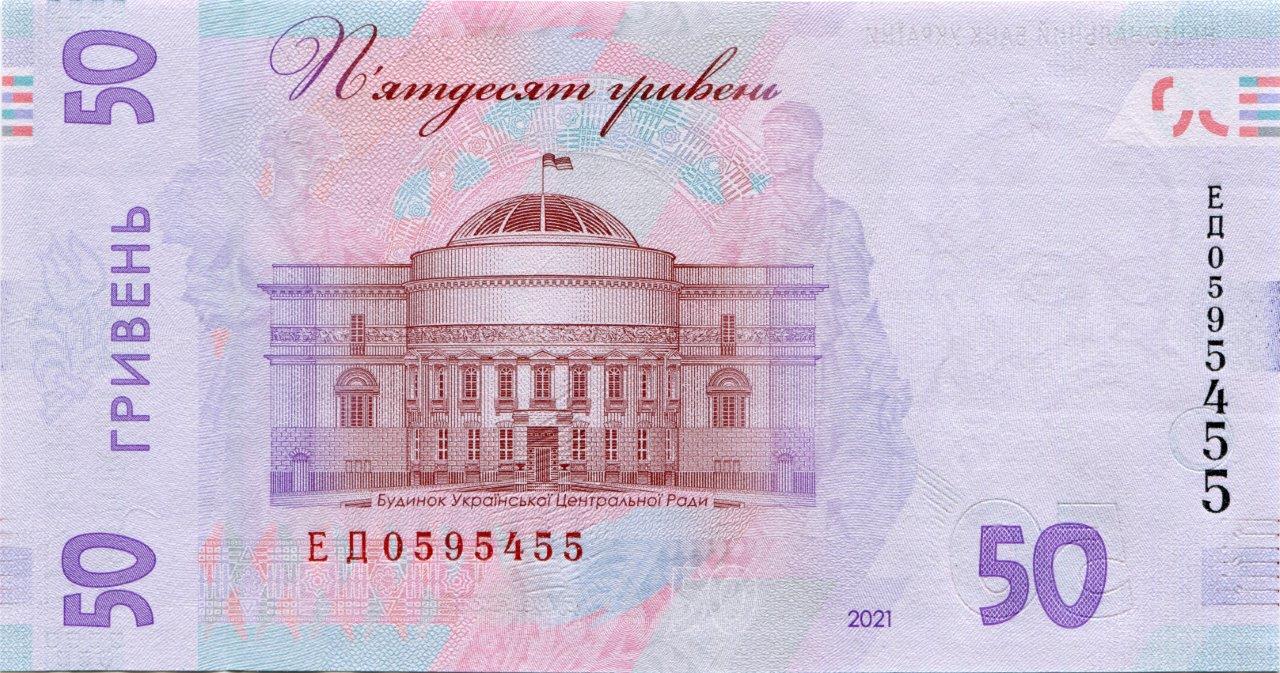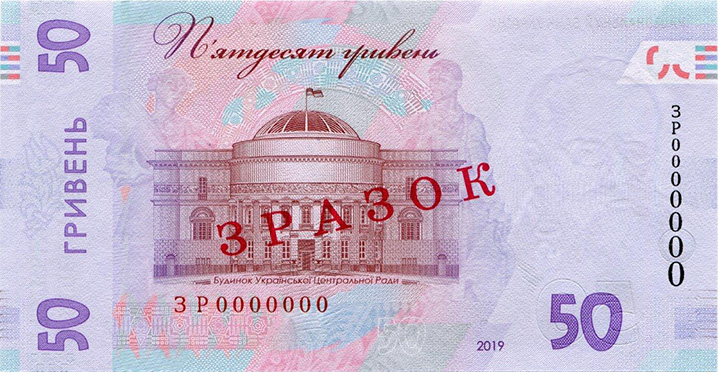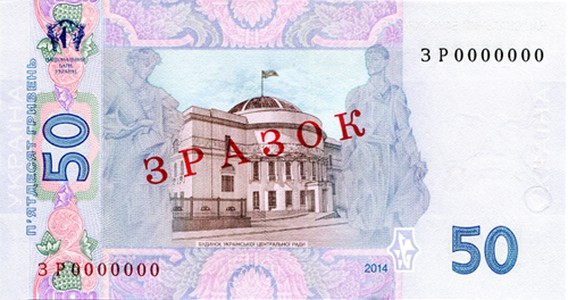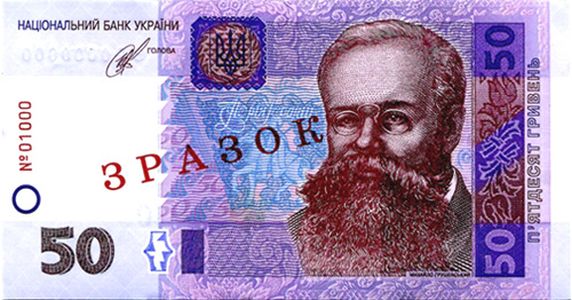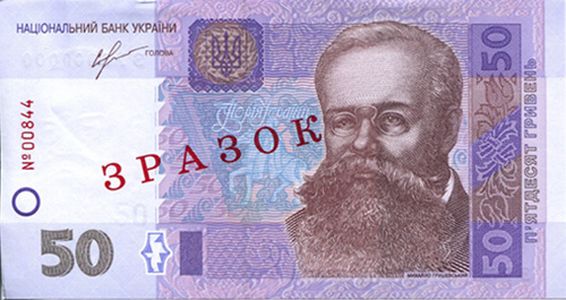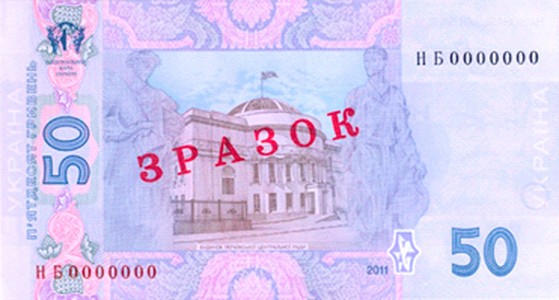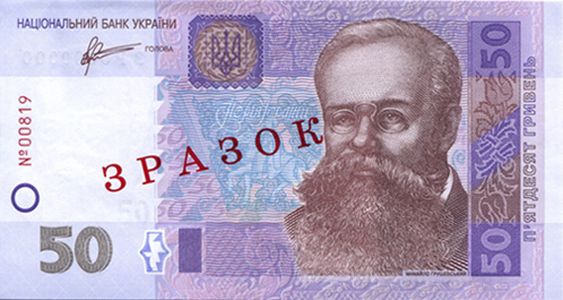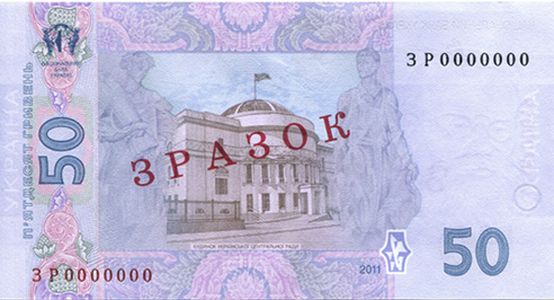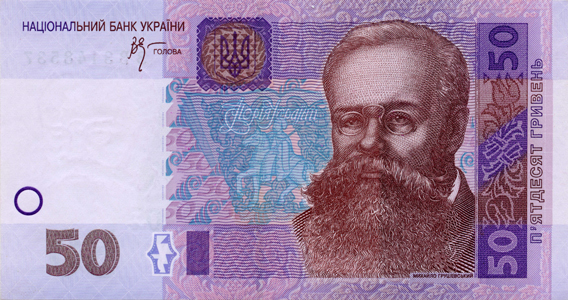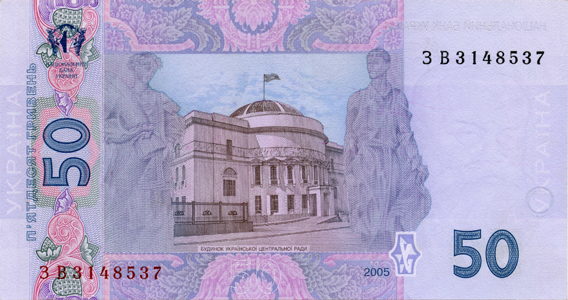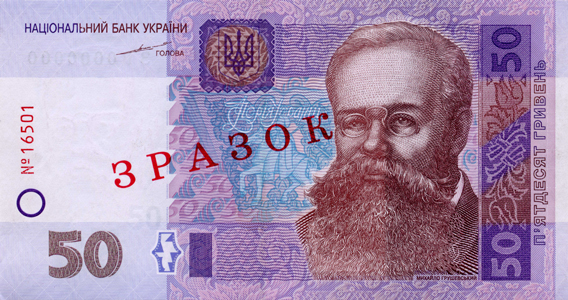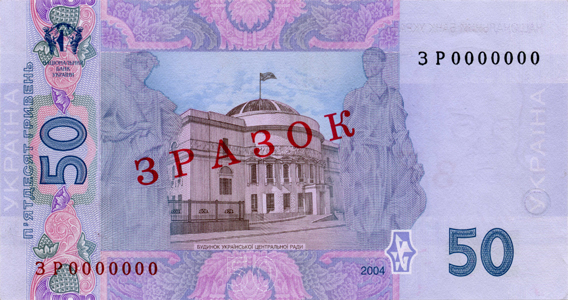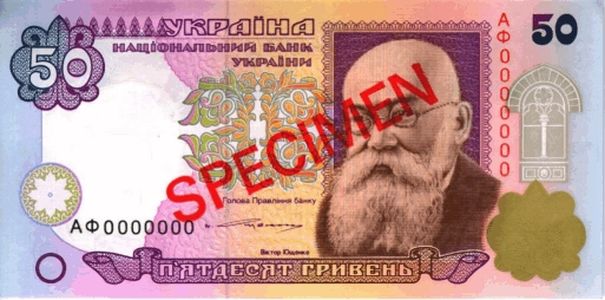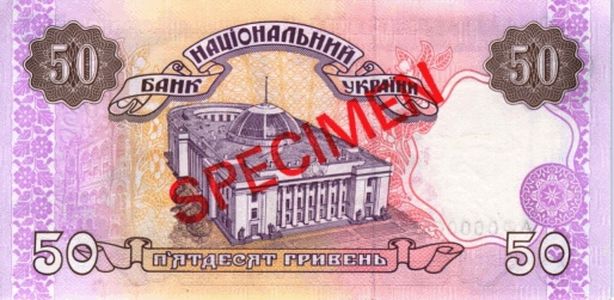The new 50 hryvnia note was issued into circulation on 20 December 2019. The banknote is sized 72х136 mm. The banknote’s dominant color is magenta.
The front of the note features a portrait of Mykhailo Hrushevsky.
Mykhailo Hrushevsky was the founder and president of the Ukrainian People’s Republic, the chair of the Central Council, a renowned historian, scientist, writer, civic and political activist, and a public figure.
The back of the note depicts the Central Council building.
The Central Council building was constructed in 1912 to a design by the famous Kyiv architect Pavlo Alioshyn. In this building, the Central Council, the first national government of Ukraine, adopted its landmark universals.
Security features
The banknote is printed on special tinted magenta paper, which is the dominant color of the banknote images.
The banknote incorporates a multi-tone local watermark, a light watermark element, security threads and security fibers.
1. Watermarks (become visible when the banknote is held up to the light): the multi-tone watermark is a repeated portrait of Mykhailo Hrushevsky formed by paper fibers in different shades (lighter and darker than the paper); the light watermark element is the numerical indication of the denomination (vertical, in the right bottom part of the multi-tone watermark).
2. Security thread - a polymer stripe, fully imbedded into the paper, on which the words "50 ГРН", a trident, and the underlined numeral "50" can be seen as direct and inverse images under a magnifying glass.
3. Optically variable feature - a stylized image of a flag depicted to the right of Mykhailo Hrushevsky’s portrait. When the banknote is tilted, the image gradually changes color from raspberry-purple to olive-green.
4. Relief elements - elements that are rough to the touch. They are only present on the front of the note (the portrait, inscriptions, numerical indications of the denomination, and microlettering).
5. Tactile feature for the partially sighted - a dark-turquoise circle placed in the bottom left corner on the front of the note to help people identify the value of the note.
6. Latent image - the numeral "50" hidden in a bicolor ornament located in the center of the right edge on the front of the note. When the note is held at a sharp angle to the light at eye level, the numerals become visible: they appear dark against a light background when the note is looked at from the long side, and light against a dark background when the note is looked at from the short side.
7. See-through register - when the note is held up to the light, irregular shapes printed on the back and front combine to form the banknote’s denomination "50". These elements are located in the top left corner on the front of the note and in the top right corner on the back of the note.
8. Microlettering - repeated inscriptions that can only be read under a magnifying glass.
9. Orlov printing - a special type of printing that ensures there is an abrupt change of one color into another, without breaking and shifting.
10. Rainbow printing - a special type of printing that ensures there is a smooth transition among the main colors of an image, avoiding breaks and displacements.
11. Serial numbers - printed in relief printing: horizontally in red ink, and vertically (with the numbers having a variable height) in black ink.
12. Anti-scan/anti-copy pattern - made of fine, multi-shaped lines that impede the reproduction of the images by copying or scanning equipment, which will produce a moiré pattern.







